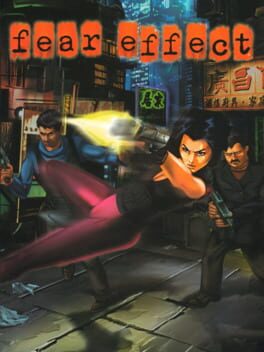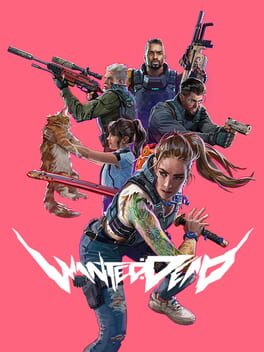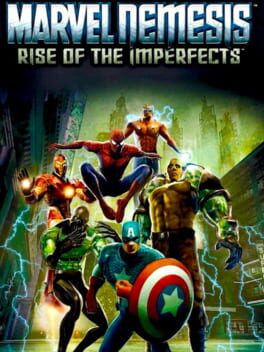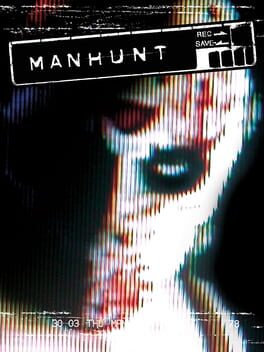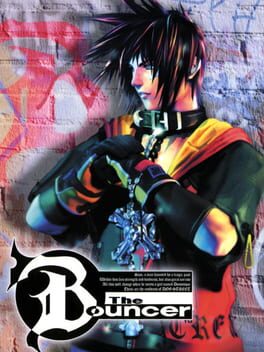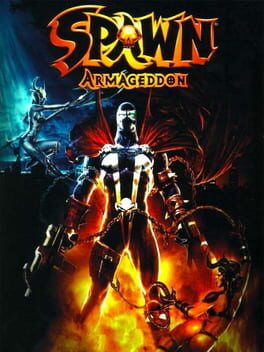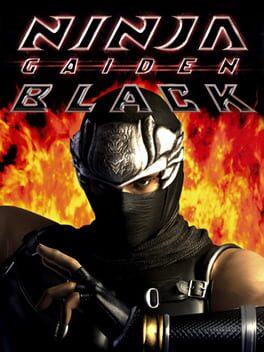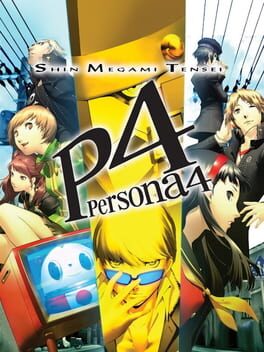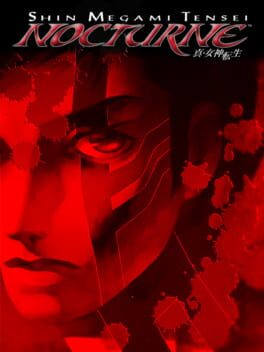FreedomForever94
47 reviews liked by FreedomForever94
Fear Effect
2000
Unlike the cinematic AAA releases of modern gaming today, Fear Effect doesn’t sacrifice what makes games fun to play in order to achieve an engrossing experience.
While recent AAA games often prioritize cinematic experiences at the expense of player agency, Fear Effect seamlessly blends cinematic elements with gameplay that demands active participation. Instead of mindlessly going through the motions with unenthusiastic side quests and simplistic action, you are constantly problem solving and thinking quickly on your feet. You don’t need to sacrifice effective gameplay to have a cinematic experience, and Fear Effect proves that.
The narrative is a winding and strange tale featuring morally gray characters and an eccentric plot that defies expectations set by disc 1. While relatively straightforward and easy to follow, it remains engaging due to how unique it is. The unexpected twists and turns, unparalleled plot devices, and impressive pacing will leave you eager to see what happens next.
This game is a technical marvel. Every single background is an FMV, similar to a sparse few scenes in Final Fantasy VII. They transition smoothly and the various surroundings are all breathing and full of life. But it’s not all looks, the FMV’s are a huge part of Fear Effect’s gameplay philosophy, as boss fights and puzzles use these often. Fear Effect is only 7 or so hours and it’s on 4 discs. It could be the shortest 4 disc game in the PS1’s library, but I’m not sure.
While Fear Effect is more simple in level design and lacks a consistent labyrinthine structure such as those found in survival horror contemporaries, it compensates in surprising ways. The intuitive combat, with its quick invincible dodge roll, stealth elements, remarkable enemy variety, and real-time ammo and weapon management is possibly the best combat found in a fixed camera-angle tank control release, only rivaled by the intense fast-paced arcade action of Dino Crisis 2. The wholly unique set-pieces that work congruently with pre-established gameplay mechanics offer ever-changing variety. Moreover, the puzzles in Fear Effect strike a perfect balance. They are challenging enough to engage players and make you rack your brain, yet avoid veering into cryptic territory. I was able to complete Fear Effect without referring to a guide. All these aspects contribute to the creation of fantastic level design. It is simpler than something like the original Resident Evil but still succeeds in keeping the player in a perpetual state of problem-solving and critical thinking.
Getting into Fear Effect can be a bit daunting, however. It’s a difficult game with swift deaths during combat and has a reliance on a trial and error design philosophy. Granted, there are sections in Fear Effect that exhibit poor design, showcasing trial and error at its most frustrating, The initial helicopter encounter and the train boss fight being prime offenders that come to mind. However, these instances, while occasionally perplexing, were seldom frustrating. They never dissuaded my pursuit of the next plot revelation, combat challenge, or mind-bending puzzle.
The trial and error design and swift deaths can be peculiar at times. Staring at the loading screen for 10 seconds isn’t fun, but the rest of this game sure is. It seamlessly blends enthralling storytelling and cinematic elements without sacrificing gameplay whatsoever. Fear Effect excels at survival horror puzzle solving and action. The level design is less complex than the contemporaries on the PS1, but it successfully blends it’s elements together to make an immersive experience that I’d recommend to survival horror fans, PS1 enthusiasts, and anyone that enjoys good video games.
9/10
While recent AAA games often prioritize cinematic experiences at the expense of player agency, Fear Effect seamlessly blends cinematic elements with gameplay that demands active participation. Instead of mindlessly going through the motions with unenthusiastic side quests and simplistic action, you are constantly problem solving and thinking quickly on your feet. You don’t need to sacrifice effective gameplay to have a cinematic experience, and Fear Effect proves that.
The narrative is a winding and strange tale featuring morally gray characters and an eccentric plot that defies expectations set by disc 1. While relatively straightforward and easy to follow, it remains engaging due to how unique it is. The unexpected twists and turns, unparalleled plot devices, and impressive pacing will leave you eager to see what happens next.
This game is a technical marvel. Every single background is an FMV, similar to a sparse few scenes in Final Fantasy VII. They transition smoothly and the various surroundings are all breathing and full of life. But it’s not all looks, the FMV’s are a huge part of Fear Effect’s gameplay philosophy, as boss fights and puzzles use these often. Fear Effect is only 7 or so hours and it’s on 4 discs. It could be the shortest 4 disc game in the PS1’s library, but I’m not sure.
While Fear Effect is more simple in level design and lacks a consistent labyrinthine structure such as those found in survival horror contemporaries, it compensates in surprising ways. The intuitive combat, with its quick invincible dodge roll, stealth elements, remarkable enemy variety, and real-time ammo and weapon management is possibly the best combat found in a fixed camera-angle tank control release, only rivaled by the intense fast-paced arcade action of Dino Crisis 2. The wholly unique set-pieces that work congruently with pre-established gameplay mechanics offer ever-changing variety. Moreover, the puzzles in Fear Effect strike a perfect balance. They are challenging enough to engage players and make you rack your brain, yet avoid veering into cryptic territory. I was able to complete Fear Effect without referring to a guide. All these aspects contribute to the creation of fantastic level design. It is simpler than something like the original Resident Evil but still succeeds in keeping the player in a perpetual state of problem-solving and critical thinking.
Getting into Fear Effect can be a bit daunting, however. It’s a difficult game with swift deaths during combat and has a reliance on a trial and error design philosophy. Granted, there are sections in Fear Effect that exhibit poor design, showcasing trial and error at its most frustrating, The initial helicopter encounter and the train boss fight being prime offenders that come to mind. However, these instances, while occasionally perplexing, were seldom frustrating. They never dissuaded my pursuit of the next plot revelation, combat challenge, or mind-bending puzzle.
The trial and error design and swift deaths can be peculiar at times. Staring at the loading screen for 10 seconds isn’t fun, but the rest of this game sure is. It seamlessly blends enthralling storytelling and cinematic elements without sacrificing gameplay whatsoever. Fear Effect excels at survival horror puzzle solving and action. The level design is less complex than the contemporaries on the PS1, but it successfully blends it’s elements together to make an immersive experience that I’d recommend to survival horror fans, PS1 enthusiasts, and anyone that enjoys good video games.
9/10
Wanted: Dead
2023
Pure unadulterated 6th gen zoomer filter
Wait, this was released just this year? How could this be?
In all seriousness though, I’m never trusting a journalist’s review ever again. I had interest in Wanted: Dead until I saw IGN’s 4/10 review calling it a bad game. I know not to trust these publications positive reviews, but usually when reviews are this low, there’s something very wrong. That’s not the case with Wanted: Dead.
Wanted: Dead is not only good, but it’s great; A beautiful seamless blend of cover shooting and hack n slash. The shooting is responsive and features great feedback. The melee combat is simple, yet engaging and challenging. Mixing these together could result in a mess, but the enemy variety, balancing and health system makes it harmonious.
Staying in cover blasting away results in running out of ammo and health. Much like Doom (2016) and Eternal, running away and hiding will get you killed. You heal from preforming the melee takedown animations and regular melee attacks. You can still use the cover shooting mechanics in an attempt to take out enemies at long range or thin out the horde, but the melee combat is what allows the player to regain health and build adrenalin. Adrenalin is basically your devil trigger or god hand, activating it shoots nearby enemies with your handgun leaving them open for a “glory kill”.
As for the melee combat itself, the only comparison I can make is Sekiro: Shadows Die Twice. Parry enemies’ basic strings and then use the handgun counter on the moves that flash red. It’s simple and it could have used a few more types of enemies. At least there are bosses that have unique strings and abilities.
My biggest complaint with Wanted: Dead is that it doesn’t evolve much. The game doesn’t change much past the first level. Sure, there’s new enemies and a skill tree that unlocks new moves, but the lack of any real level design, platforming, or puzzles makes it more paced like a beat ‘em up than a traditional 6th gen character action game like Devil May Cry or Ninja Gaiden. Still, I didn’t find myself getting bored. It throws waves and waves of enemies at you with new combinations.
The checkpoints are stretched really far apart. It can be frustrating (especially a certain one of level 4) but overall I think it ties in well with the design they were going for. Wanted: Dead also has some jank but who cares? I don’t know why people get so upset about this. I glitched out of bounds twice, some of the animations froze during the glory kills, the chainsaw can miss right through enemies, a few times I couldn’t pickup a med kit, but if you’re gonna let that get in your way you’re not playing video games for the right reasons.
Wanted: Dead’s world is bursting with personality. There’s multiple goofy mini games and strange yet compelling voice acting.
Lieutenant Stone’s VA specifically is strange. Theres a few lines delivered poorly, but her unique tone makes it memorable. With all the extra side content I barely touched, I’m surprised how short the game was. It’s set up like a much longer game, complete with an HQ area and challenge arena, but it only lasted 7 hours for me. The story starts as a confusing mess without any structure, but eventually in the penultimate level, the twists and turns make sense of most of it without spelling it all out.
The devs of Wanted: Dead proclaimed it to be a “love letter to the 6th generation of games” and that’s absolutely what it is, warts and all. I cannot fathom someone playing this game and legitimately thinking it’s “bad”. It’s straightforward challenging fun. Get filtered.
8/10
Wait, this was released just this year? How could this be?
In all seriousness though, I’m never trusting a journalist’s review ever again. I had interest in Wanted: Dead until I saw IGN’s 4/10 review calling it a bad game. I know not to trust these publications positive reviews, but usually when reviews are this low, there’s something very wrong. That’s not the case with Wanted: Dead.
Wanted: Dead is not only good, but it’s great; A beautiful seamless blend of cover shooting and hack n slash. The shooting is responsive and features great feedback. The melee combat is simple, yet engaging and challenging. Mixing these together could result in a mess, but the enemy variety, balancing and health system makes it harmonious.
Staying in cover blasting away results in running out of ammo and health. Much like Doom (2016) and Eternal, running away and hiding will get you killed. You heal from preforming the melee takedown animations and regular melee attacks. You can still use the cover shooting mechanics in an attempt to take out enemies at long range or thin out the horde, but the melee combat is what allows the player to regain health and build adrenalin. Adrenalin is basically your devil trigger or god hand, activating it shoots nearby enemies with your handgun leaving them open for a “glory kill”.
As for the melee combat itself, the only comparison I can make is Sekiro: Shadows Die Twice. Parry enemies’ basic strings and then use the handgun counter on the moves that flash red. It’s simple and it could have used a few more types of enemies. At least there are bosses that have unique strings and abilities.
My biggest complaint with Wanted: Dead is that it doesn’t evolve much. The game doesn’t change much past the first level. Sure, there’s new enemies and a skill tree that unlocks new moves, but the lack of any real level design, platforming, or puzzles makes it more paced like a beat ‘em up than a traditional 6th gen character action game like Devil May Cry or Ninja Gaiden. Still, I didn’t find myself getting bored. It throws waves and waves of enemies at you with new combinations.
The checkpoints are stretched really far apart. It can be frustrating (especially a certain one of level 4) but overall I think it ties in well with the design they were going for. Wanted: Dead also has some jank but who cares? I don’t know why people get so upset about this. I glitched out of bounds twice, some of the animations froze during the glory kills, the chainsaw can miss right through enemies, a few times I couldn’t pickup a med kit, but if you’re gonna let that get in your way you’re not playing video games for the right reasons.
Wanted: Dead’s world is bursting with personality. There’s multiple goofy mini games and strange yet compelling voice acting.
Lieutenant Stone’s VA specifically is strange. Theres a few lines delivered poorly, but her unique tone makes it memorable. With all the extra side content I barely touched, I’m surprised how short the game was. It’s set up like a much longer game, complete with an HQ area and challenge arena, but it only lasted 7 hours for me. The story starts as a confusing mess without any structure, but eventually in the penultimate level, the twists and turns make sense of most of it without spelling it all out.
The devs of Wanted: Dead proclaimed it to be a “love letter to the 6th generation of games” and that’s absolutely what it is, warts and all. I cannot fathom someone playing this game and legitimately thinking it’s “bad”. It’s straightforward challenging fun. Get filtered.
8/10
Resident Evil 4
2023
You may look at gameplay of Marvel Nemesis and say “hey, it doesn’t look that bad. There’s various Marvel characters, it’s animated fairly well, and it has a unique aesthetic for a comic book game even though the graphics are mid. How bad could it be?”
Well, where do I start?
The combat is dull and unbalanced. Marvel Nemesis is a beat ‘em up with seemingly no depth. There’s a block, regular attack string, and a grab. Each character has a superpower they can activate but it’s either a projectile or makes their regular string more powerful. There’s also objects around the stages you can throw and they are far too powerful. They one shot every base enemy without getting up close.
When actually attack enemies you’ll notice how unresponsive the game is. Its not because of an input delay or slowdown issue, it’s because there’s so many frames of delay at the end of everything you do. You can’t cancel anything except attacks into grab. If an enemy blocks your attack, you’re stuck in place for 2 seconds while projectile enemies rain down missiles that ricochet you into other explosives. Getting knock over results in so much downtime for the player, and you can easily be knock over right away as soon as you get up. Barrels and cars just fly everywhere from offscreen. It’s such an unbalanced mess. You’ll beat some levels with no issues barely getting hit, and others will be a roadblock for no discernible reason. It’s an unbalanced unresponsive mess.
The level design is as bad as possible. Marvel Nemesis has bland environments that are reused CONSTANTLY. Levels play more like bonus challenges you’d unlock more than well thought out coherent structures. No puzzles, no platforming, no creative objectives. It’s always something dull such as “defeat 20 enemies!” Or “destroy the objects!”. These stages last about 2-5 minutes. Every time you finish one, you’ll feel a huge relief that you’re closer to the end of this catastrophe.
The boss fights are horrendous and there’s so many of them. There’s usually a boss fight after every two “beat ‘em up” levels. Multiple explosives going off at once stack so you can easily kill bosses in less than 20 seconds if they ricochet off of them. However, the opposite is also true. You can get absolutely steamrolled by these bosses because of these stacking explosives. Battles are more so a competition to who can throw more stuff at the opponent than a clash between unique super-powered heroes. I also had FOUR bosses kill themselves by flying off the edge.
This game is also strangely disrespectful to the source material. I’m more of a DC guy, but having these new generic characters known as “The Imperfects” kill multiple prominent Marvel heroes is silly. It’s trying to be dark and edgy, but it comes off as the develops saying that “our new characters are better”.
I’d like to also mention the PlayStation 2 version. Apparently, it has a game breaking bug that makes the first level unable to be completed. You have to enter a cheat code to bypass it. If you are considering playing this game (I don’t recommend it) I’d avoid the PS2 version. If you must play this frustrating miserable game, I’d recommend the Xbox version.
It’s a significant testament to a games’ quality if you find yourself running past enemies just to get it over with. With Marvel Nemesis, I did this nearly every level I could. Unbalanced unresponsive, unpolished, Rise of the Imperfects is a tedious and often frustrating experience that you wouldn’t wish on your worst enemies.
2/10
Well, where do I start?
The combat is dull and unbalanced. Marvel Nemesis is a beat ‘em up with seemingly no depth. There’s a block, regular attack string, and a grab. Each character has a superpower they can activate but it’s either a projectile or makes their regular string more powerful. There’s also objects around the stages you can throw and they are far too powerful. They one shot every base enemy without getting up close.
When actually attack enemies you’ll notice how unresponsive the game is. Its not because of an input delay or slowdown issue, it’s because there’s so many frames of delay at the end of everything you do. You can’t cancel anything except attacks into grab. If an enemy blocks your attack, you’re stuck in place for 2 seconds while projectile enemies rain down missiles that ricochet you into other explosives. Getting knock over results in so much downtime for the player, and you can easily be knock over right away as soon as you get up. Barrels and cars just fly everywhere from offscreen. It’s such an unbalanced mess. You’ll beat some levels with no issues barely getting hit, and others will be a roadblock for no discernible reason. It’s an unbalanced unresponsive mess.
The level design is as bad as possible. Marvel Nemesis has bland environments that are reused CONSTANTLY. Levels play more like bonus challenges you’d unlock more than well thought out coherent structures. No puzzles, no platforming, no creative objectives. It’s always something dull such as “defeat 20 enemies!” Or “destroy the objects!”. These stages last about 2-5 minutes. Every time you finish one, you’ll feel a huge relief that you’re closer to the end of this catastrophe.
The boss fights are horrendous and there’s so many of them. There’s usually a boss fight after every two “beat ‘em up” levels. Multiple explosives going off at once stack so you can easily kill bosses in less than 20 seconds if they ricochet off of them. However, the opposite is also true. You can get absolutely steamrolled by these bosses because of these stacking explosives. Battles are more so a competition to who can throw more stuff at the opponent than a clash between unique super-powered heroes. I also had FOUR bosses kill themselves by flying off the edge.
This game is also strangely disrespectful to the source material. I’m more of a DC guy, but having these new generic characters known as “The Imperfects” kill multiple prominent Marvel heroes is silly. It’s trying to be dark and edgy, but it comes off as the develops saying that “our new characters are better”.
I’d like to also mention the PlayStation 2 version. Apparently, it has a game breaking bug that makes the first level unable to be completed. You have to enter a cheat code to bypass it. If you are considering playing this game (I don’t recommend it) I’d avoid the PS2 version. If you must play this frustrating miserable game, I’d recommend the Xbox version.
It’s a significant testament to a games’ quality if you find yourself running past enemies just to get it over with. With Marvel Nemesis, I did this nearly every level I could. Unbalanced unresponsive, unpolished, Rise of the Imperfects is a tedious and often frustrating experience that you wouldn’t wish on your worst enemies.
2/10
Manhunt
2003
A game you’ll want to like more than you can
The subject matter of Manhunt is one I’m enthralled with. Mock found footage snuff films such as August Underground are not good films whatsoever, but they are quite peculiar. I’ve always been morbidly curious in such things and I can’t quite put a finger on why. Maybe it’s a fascination with death, maybe it’s just a desire to see how far the gore can go. Either way, these low quality amateur films have an indescribable atmosphere. It’s quaint, yet menacing. They are without polish, but that’s what makes it so raw and intense. There’s no expert cinematography or editing to create a coherent film. It’s just vile acts and you’re witnessing it. Manhunt, through its expert sound design and brilliant aesthetic, captures this atmosphere flawlessly.
It all starts with the manual. It reads like a magazine for a snuff film site, complete with accurate pseudonyms such as “Mr. nasty”. Then there’s the main menu. It looks and functions like a VHS tape, and the haunting score sets up Manhunt’s dismal aura.
The gore in Manhunt has been topped twice over, but the context of the gore has not. You’ve seen ridiculous fatalities in Mortal Kombat way gorier than anything found in Manhunt, but Manhunt’s snuff film design makes the player feel it even more. The sound design ensure you feel every bone break, every decapitation, and every gargle of blood. The atmosphere creates a melancholic sensation in the player. It’s not a celebration of how far violence can be pushed, although pushing limits is part of its appeal. Manhunt is more of grim reminder of the depravity that goes on in this world.
The banter the Hunters have in this game is great. Each gang is very distinct. There’s white supremacists, mental hospital patients, and those that continually repeat lines of domestic abuse. They all add a ton of personality to each section and help with the variety. Starkweather, the director behind the twisted snuff films the player is participating in, also has lines that hint towards his debauchery. He’s the type of guy to get his rocks off to these brutal murders. There’s tons of lines in this game. Each playthrough you’re likely to hear something new.
The gameplay in Manhunt however isn’t amazing. What starts as an intense game of hide and seek turns into a bad third-person shooter filled with trial and error.
The stealth in Manhunt is fairly well constructed, but unfortunately has simple exploits that dampen its impact. Manhunt has a clear indications of how quiet and shrouded in darkness you are. The game will never lie to you. Finding pockets of darkness makes you invisible unless an enemy runs right into you which can only happen when they’re on alert. The mini map shows enemies you have a sight line on or who are making noise. Making a loud noise will alert enemies to your position. This is where the exploit is. It’s way too powerful to alert enemies while hiding in the dark. Through this mechanic, it doesn’t even matter how the game designers set up the patrols for the hunters. They’ll always come running, and as soon as they turn around you execute them. Sometimes more than one will come and you’ll have to think on the fly, but generally, Manhunt is a exploitable and simple game.
The levels have some nice open design throughout. Some levels are completely linear which is disappointing, but a few such as White Trash or Mouth of Madness have open areas with many enemies. This is where the game is at its best because it isn’t easy and it’s engaging to figure out the best way to tackle the challenge.
Then there’s the third-person shooting. Good lord. Now, I want to preface this by saying I’m not against the third-person shooting in theory. Manhunt is a fairly long game. If it was all slow-paced stealth, it would have suffered. However in practice, it’s terrible. The shooting sections keep what makes Manhunt memorable. The soundtrack and intensity is still there through these sections, but the shooting is bad. You die in very few shots, so shooting without cover is usually suicide. It feels like the only way to succeed in these sections is to use exploits or go through the motion of trial and error. It’s boring and tiring. Enemies stop following the rules and just stand behind cover. A lot of sections feel like the only way to win is to shoot one guy and then run to darkness, rinse and repeat. It’s not engaging or fun.
Manhunt means a lot to me. It’s the only game I can think of that fits this niche of horror. But when it’s all said and done, I’m able to look past the my nostalgia and fondness of the subject matter to tell you that the gameplay is below average. Manhunt is a chore to get through at times. The second half has the worst dip in quality I’ve seen outside of Resident Evil 7. But the atmosphere is peak. It’s one of my favorite aesthetics ever in a video game. It kept me playing until the conclusion, once again.
6/10
The subject matter of Manhunt is one I’m enthralled with. Mock found footage snuff films such as August Underground are not good films whatsoever, but they are quite peculiar. I’ve always been morbidly curious in such things and I can’t quite put a finger on why. Maybe it’s a fascination with death, maybe it’s just a desire to see how far the gore can go. Either way, these low quality amateur films have an indescribable atmosphere. It’s quaint, yet menacing. They are without polish, but that’s what makes it so raw and intense. There’s no expert cinematography or editing to create a coherent film. It’s just vile acts and you’re witnessing it. Manhunt, through its expert sound design and brilliant aesthetic, captures this atmosphere flawlessly.
It all starts with the manual. It reads like a magazine for a snuff film site, complete with accurate pseudonyms such as “Mr. nasty”. Then there’s the main menu. It looks and functions like a VHS tape, and the haunting score sets up Manhunt’s dismal aura.
The gore in Manhunt has been topped twice over, but the context of the gore has not. You’ve seen ridiculous fatalities in Mortal Kombat way gorier than anything found in Manhunt, but Manhunt’s snuff film design makes the player feel it even more. The sound design ensure you feel every bone break, every decapitation, and every gargle of blood. The atmosphere creates a melancholic sensation in the player. It’s not a celebration of how far violence can be pushed, although pushing limits is part of its appeal. Manhunt is more of grim reminder of the depravity that goes on in this world.
The banter the Hunters have in this game is great. Each gang is very distinct. There’s white supremacists, mental hospital patients, and those that continually repeat lines of domestic abuse. They all add a ton of personality to each section and help with the variety. Starkweather, the director behind the twisted snuff films the player is participating in, also has lines that hint towards his debauchery. He’s the type of guy to get his rocks off to these brutal murders. There’s tons of lines in this game. Each playthrough you’re likely to hear something new.
The gameplay in Manhunt however isn’t amazing. What starts as an intense game of hide and seek turns into a bad third-person shooter filled with trial and error.
The stealth in Manhunt is fairly well constructed, but unfortunately has simple exploits that dampen its impact. Manhunt has a clear indications of how quiet and shrouded in darkness you are. The game will never lie to you. Finding pockets of darkness makes you invisible unless an enemy runs right into you which can only happen when they’re on alert. The mini map shows enemies you have a sight line on or who are making noise. Making a loud noise will alert enemies to your position. This is where the exploit is. It’s way too powerful to alert enemies while hiding in the dark. Through this mechanic, it doesn’t even matter how the game designers set up the patrols for the hunters. They’ll always come running, and as soon as they turn around you execute them. Sometimes more than one will come and you’ll have to think on the fly, but generally, Manhunt is a exploitable and simple game.
The levels have some nice open design throughout. Some levels are completely linear which is disappointing, but a few such as White Trash or Mouth of Madness have open areas with many enemies. This is where the game is at its best because it isn’t easy and it’s engaging to figure out the best way to tackle the challenge.
Then there’s the third-person shooting. Good lord. Now, I want to preface this by saying I’m not against the third-person shooting in theory. Manhunt is a fairly long game. If it was all slow-paced stealth, it would have suffered. However in practice, it’s terrible. The shooting sections keep what makes Manhunt memorable. The soundtrack and intensity is still there through these sections, but the shooting is bad. You die in very few shots, so shooting without cover is usually suicide. It feels like the only way to succeed in these sections is to use exploits or go through the motion of trial and error. It’s boring and tiring. Enemies stop following the rules and just stand behind cover. A lot of sections feel like the only way to win is to shoot one guy and then run to darkness, rinse and repeat. It’s not engaging or fun.
Manhunt means a lot to me. It’s the only game I can think of that fits this niche of horror. But when it’s all said and done, I’m able to look past the my nostalgia and fondness of the subject matter to tell you that the gameplay is below average. Manhunt is a chore to get through at times. The second half has the worst dip in quality I’ve seen outside of Resident Evil 7. But the atmosphere is peak. It’s one of my favorite aesthetics ever in a video game. It kept me playing until the conclusion, once again.
6/10
The Bouncer
2000
A completely indescribable experience. The Bouncer is not a good game. In fact, it’s terrible, but it’s a game every human being should experience. The English lexicon is unable to explain what The Bouncer is. Attempting to review or decipher this game is doing a disservice. It’s the video game of all time.
Spawn: Armageddon
2003
Mediocre DMC clone
Spawn: Armageddon starts off well enough. The CG cutscenes look good and the presentation is quite nice.
The combat is mixed. It’s not without good ideas, but it fails to push the player to engage with its systems in a dynamic way most of the time. There’s a technique bonus for killing enemies a certain way. Getting this bonus will reward extra souls for powering up Spawn and help achieve a higher ranking. While most of the time going for the technique bonus is also the most effective way to kill enemies, sometimes it’s completely impractical to go for. Enemies like the Angelic Warriors, require a counter attack when undoubtedly the most effective strategy is ranged attacks. But the system works rather well overall. The game does a good job of throwing multiple types of foes at the same time, causing the player to focus down the more threatening enemies.
There’s some technical issues with the combat as well. Inputs constantly get eaten. There seems to be no input buffer. Much like DMC, jumping is your best defensive option. Jumping after attacking doesn’t work most of the time. This makes boss fights painful. The camera is a constant hindrance. It gets stuck on the walls and trapped underneath platforms obscuring the action completely.
The level design is bad. Bland open environments similar to Devil May Cry 2. There’s awesome mechanics such as the double jump, gliding, wall jumping, and grappling, but the levels hardly take advantage of this. There’s a few levels that do, but Spawn: Armageddon ultimately fails to combine its platforming mechanics into level structures.
Spawn: Armageddon isn’t a good game, but it isn’t a bad one either. If you’re a fan of the source material, you’ll likely enjoy your time. It has tons of similarities to Devil May Cry 2 but it’s a much better game. It’s the type of game where if you bought it when it came out, you wouldn’t have been disappointed, you just wouldn’t be blown away.
5/10
Spawn: Armageddon starts off well enough. The CG cutscenes look good and the presentation is quite nice.
The combat is mixed. It’s not without good ideas, but it fails to push the player to engage with its systems in a dynamic way most of the time. There’s a technique bonus for killing enemies a certain way. Getting this bonus will reward extra souls for powering up Spawn and help achieve a higher ranking. While most of the time going for the technique bonus is also the most effective way to kill enemies, sometimes it’s completely impractical to go for. Enemies like the Angelic Warriors, require a counter attack when undoubtedly the most effective strategy is ranged attacks. But the system works rather well overall. The game does a good job of throwing multiple types of foes at the same time, causing the player to focus down the more threatening enemies.
There’s some technical issues with the combat as well. Inputs constantly get eaten. There seems to be no input buffer. Much like DMC, jumping is your best defensive option. Jumping after attacking doesn’t work most of the time. This makes boss fights painful. The camera is a constant hindrance. It gets stuck on the walls and trapped underneath platforms obscuring the action completely.
The level design is bad. Bland open environments similar to Devil May Cry 2. There’s awesome mechanics such as the double jump, gliding, wall jumping, and grappling, but the levels hardly take advantage of this. There’s a few levels that do, but Spawn: Armageddon ultimately fails to combine its platforming mechanics into level structures.
Spawn: Armageddon isn’t a good game, but it isn’t a bad one either. If you’re a fan of the source material, you’ll likely enjoy your time. It has tons of similarities to Devil May Cry 2 but it’s a much better game. It’s the type of game where if you bought it when it came out, you wouldn’t have been disappointed, you just wouldn’t be blown away.
5/10
The most jank 6th gen game I’ve played
Red Ninja: End of Honor’s problems are apparent as soon as you start the tutorial. The camera is inverted horizontally, which is a nightmare. Your character, Kurenai, is far too fast. She runs around like a madman while turning in any direction results in the camera spinning all over the place, disorienting the player. There’s also so many inconsistencies with the controls. Crouching is a hold while getting on a wall is toggle. You also can’t go into crouch mode while moving, which doesn’t sound that bad, but it destroyed the flow and is impossible to get used to. When locked on to an enemy, the A button (X on PlayStation) now rolls, but only sometimes? Sometimes it jumps and sometimes it rolls. The control scheme is also terrible. Since the crouch button is B and Attack is X, it’s impossible to press both at the same time without using a claw-shaped hand.
There’s also wall running in this game. Words cannot describe how bad it is, but I’m going to try. While Kurenai runs, she gradually builds up speed and once you reach max speed, she can run on walls. The problem is that you need to steer her on the wall as well as aim her at the right angle into the wall. For example, let’s say you’re holding up on the thumbstick. As soon as she starts running on the wall, you must IMMEDIATELY hold the direction you need to go (left or right) or she’ll just slip off the wall. It takes dozens of attempts at every wall running portion.
So what we have here is a clusterfuck of jank. Every aspect of controlling Kurenai is working against you, except the grappling hook. At least that seems to work well and has some nice momentum to it. I’m not the type to get filtered by jank. I like jank games more than the next guy, but this is shit.
It’s not even worth talking about any other aspect of the game. It’s completely ruined by the camera and controls. Red Ninja’s faults are so fundamental and basic that aspects like level design, AI, balance, etc. don’t even factor into the quality of the game. From what I played, it was too linear. Stealth games without some sort of open ended design fail because there’s needs to be multiple approaches. Having only one way to tackle a challenge makes for poor replay value and a lack of player agency. The balance is terrible as well. Kurenai’s tetsugen is extremely powerful, making the use of stealth more of a hindrance than a vital mechanic.
There’s nothing redeeming about Red Ninja: End of Honor besides the sex appeal of the leading lady. It’s a shameless rip-off of Tenchu: Wrath of Heaven and doesn’t even come close. Red Ninja is the most mechanically flawed game I have ever played.
2/10
Red Ninja: End of Honor’s problems are apparent as soon as you start the tutorial. The camera is inverted horizontally, which is a nightmare. Your character, Kurenai, is far too fast. She runs around like a madman while turning in any direction results in the camera spinning all over the place, disorienting the player. There’s also so many inconsistencies with the controls. Crouching is a hold while getting on a wall is toggle. You also can’t go into crouch mode while moving, which doesn’t sound that bad, but it destroyed the flow and is impossible to get used to. When locked on to an enemy, the A button (X on PlayStation) now rolls, but only sometimes? Sometimes it jumps and sometimes it rolls. The control scheme is also terrible. Since the crouch button is B and Attack is X, it’s impossible to press both at the same time without using a claw-shaped hand.
There’s also wall running in this game. Words cannot describe how bad it is, but I’m going to try. While Kurenai runs, she gradually builds up speed and once you reach max speed, she can run on walls. The problem is that you need to steer her on the wall as well as aim her at the right angle into the wall. For example, let’s say you’re holding up on the thumbstick. As soon as she starts running on the wall, you must IMMEDIATELY hold the direction you need to go (left or right) or she’ll just slip off the wall. It takes dozens of attempts at every wall running portion.
So what we have here is a clusterfuck of jank. Every aspect of controlling Kurenai is working against you, except the grappling hook. At least that seems to work well and has some nice momentum to it. I’m not the type to get filtered by jank. I like jank games more than the next guy, but this is shit.
It’s not even worth talking about any other aspect of the game. It’s completely ruined by the camera and controls. Red Ninja’s faults are so fundamental and basic that aspects like level design, AI, balance, etc. don’t even factor into the quality of the game. From what I played, it was too linear. Stealth games without some sort of open ended design fail because there’s needs to be multiple approaches. Having only one way to tackle a challenge makes for poor replay value and a lack of player agency. The balance is terrible as well. Kurenai’s tetsugen is extremely powerful, making the use of stealth more of a hindrance than a vital mechanic.
There’s nothing redeeming about Red Ninja: End of Honor besides the sex appeal of the leading lady. It’s a shameless rip-off of Tenchu: Wrath of Heaven and doesn’t even come close. Red Ninja is the most mechanically flawed game I have ever played.
2/10
Near perfect mechanics hampered by questionable game design decisions
Analog aiming is vastly inferior to mouse aiming. When developers are creating primarily console shooters, they must make concessions in order for the experience to be satisfactory. These games typically have over-zealous auto-aim, bland cover systems, or ADS systems that snap to targets generously.
Urban Chaos: Riot Response rejects all of these constraints. Instead, Rocksteady created a system that takes the disadvantage of analog aiming and turns it into a unique strength. How did they do this? Through the riot shield.
Urban Chaos: Riot Response plays like a cover shooter, except your cover is anywhere you want it. The riot shield is your best friend. It blocks all damage in the front from gunfire, cleavers, and even nail bombs. While having your shield up, you can block all damage and simultaneously line up headshots with the upmost precision. This system slows the game down so that you can deliberately aim without spraying. In fact, spraying will get you killed quickly in Urban Chaos. Limiting shield downtime is important because you die so quickly. Release the shield, quickly dispatch a foe, and get the shield back up. Some rooms aren’t so simple. You won’t be able to face all your opponents with your shield at once. Rooms frequently have ambushes from the side, up high, or behind. Using cover is still important because it can cover multiple sides.
Urban Chaos’ medal system plays into this as well. In each mission, there’s medals for getting a certain amount of headshots, arrests, completing the level without dying, and finding masks. Collecting medals can upgrade the amount of ammo you start with and grant certain equipment. Through these medals, Urban Chaos rewards the best way to play. Without headshots, enemies tank damage and shoot back. Arrests are the best way to take care of foes up close or that have shields themselves. Rewarding the optimal way to play is paramount for arcade-style games such as this one.
Another reward is arresting gang leaders. Upon arrest, new bonus levels unlock. These challenging levels reward the player with a new default weapon. One of the extra weapons (the assault rifle) is far too powerful. It completely makes every other gun obsolete as it’s the best weapon for getting headshots. The bonus shotgun is useless in comparison. You CAN get headshots, but it’s nearly impossible. I believe it might stun shield gang members but I’m not sure. It basically has no use because getting the headshot medal is so important.
With all these praise you may be surprised to see I’ve only given Urban Chaos a 7/10. However, as good as the combat is there’s a major problem with Urban Chaos’ design philosophy. Missions are reliant on NPCs. Every level has these people constantly talking to you interrupting the flow. You always have to escort an NPC in some capacity. There’s always a boring objective where you have to save someone while there’s no enemies around. Extreme linearity runs rampant. All there is to Urban Chaos is escorting NPCs, dialogue, and then walking forward and shooting guys. I know what they were trying to go for. You’re a police officer saving people in the depths of collapsing buildings and gang violence. It doesn’t make for engaging level design though.
Other minor annoyances include backtracking to get healing from paramedics instead of med packs being balance around the map, “hostage situations” which might as well be a scripted cutscene, limited ammo never being a factor, and level based design instead of one continuous stream of environments as in Half-Life or F.E.A.R.
If my backlog wasn’t absolutely packed right now, I’d play Urban Chaos again and again. There’s so much replay value. The moment to moment combat is visceral, meticulous, and yet still has an arcade feel that I adore. The puzzling game design decisions deeply hamper the experience, but Urban Chaos is a rare console FPS that turns the weaknesses of analog aiming into a unique strength.
7/10
Analog aiming is vastly inferior to mouse aiming. When developers are creating primarily console shooters, they must make concessions in order for the experience to be satisfactory. These games typically have over-zealous auto-aim, bland cover systems, or ADS systems that snap to targets generously.
Urban Chaos: Riot Response rejects all of these constraints. Instead, Rocksteady created a system that takes the disadvantage of analog aiming and turns it into a unique strength. How did they do this? Through the riot shield.
Urban Chaos: Riot Response plays like a cover shooter, except your cover is anywhere you want it. The riot shield is your best friend. It blocks all damage in the front from gunfire, cleavers, and even nail bombs. While having your shield up, you can block all damage and simultaneously line up headshots with the upmost precision. This system slows the game down so that you can deliberately aim without spraying. In fact, spraying will get you killed quickly in Urban Chaos. Limiting shield downtime is important because you die so quickly. Release the shield, quickly dispatch a foe, and get the shield back up. Some rooms aren’t so simple. You won’t be able to face all your opponents with your shield at once. Rooms frequently have ambushes from the side, up high, or behind. Using cover is still important because it can cover multiple sides.
Urban Chaos’ medal system plays into this as well. In each mission, there’s medals for getting a certain amount of headshots, arrests, completing the level without dying, and finding masks. Collecting medals can upgrade the amount of ammo you start with and grant certain equipment. Through these medals, Urban Chaos rewards the best way to play. Without headshots, enemies tank damage and shoot back. Arrests are the best way to take care of foes up close or that have shields themselves. Rewarding the optimal way to play is paramount for arcade-style games such as this one.
Another reward is arresting gang leaders. Upon arrest, new bonus levels unlock. These challenging levels reward the player with a new default weapon. One of the extra weapons (the assault rifle) is far too powerful. It completely makes every other gun obsolete as it’s the best weapon for getting headshots. The bonus shotgun is useless in comparison. You CAN get headshots, but it’s nearly impossible. I believe it might stun shield gang members but I’m not sure. It basically has no use because getting the headshot medal is so important.
With all these praise you may be surprised to see I’ve only given Urban Chaos a 7/10. However, as good as the combat is there’s a major problem with Urban Chaos’ design philosophy. Missions are reliant on NPCs. Every level has these people constantly talking to you interrupting the flow. You always have to escort an NPC in some capacity. There’s always a boring objective where you have to save someone while there’s no enemies around. Extreme linearity runs rampant. All there is to Urban Chaos is escorting NPCs, dialogue, and then walking forward and shooting guys. I know what they were trying to go for. You’re a police officer saving people in the depths of collapsing buildings and gang violence. It doesn’t make for engaging level design though.
Other minor annoyances include backtracking to get healing from paramedics instead of med packs being balance around the map, “hostage situations” which might as well be a scripted cutscene, limited ammo never being a factor, and level based design instead of one continuous stream of environments as in Half-Life or F.E.A.R.
If my backlog wasn’t absolutely packed right now, I’d play Urban Chaos again and again. There’s so much replay value. The moment to moment combat is visceral, meticulous, and yet still has an arcade feel that I adore. The puzzling game design decisions deeply hamper the experience, but Urban Chaos is a rare console FPS that turns the weaknesses of analog aiming into a unique strength.
7/10
Wanted: Dead
2023
Wanted: Dead is not that weird, a lot of popular games have just become too buttoned down.
W:D works in that margin of utterly compelling amateur game efforts. They have a handful of genre and story ideas that they're ready to follow to the grave, but the rest is up in the air. Will the next cutscene be in-engine or will it be anime? What annoying rhythm minigame will be featured in between the next mission? Why is there a jukebox of obscure European covers of old pop songs?
It's a damn videogame. You can do whatever you want. Without blanching at the audacity of games to be absurd, there's not much left to criticize here. The story is a properly bloody wink wink quick shot of violent adrenaline, the action is snappy fun and rewarding. I just wanted: more of it.
W:D works in that margin of utterly compelling amateur game efforts. They have a handful of genre and story ideas that they're ready to follow to the grave, but the rest is up in the air. Will the next cutscene be in-engine or will it be anime? What annoying rhythm minigame will be featured in between the next mission? Why is there a jukebox of obscure European covers of old pop songs?
It's a damn videogame. You can do whatever you want. Without blanching at the audacity of games to be absurd, there's not much left to criticize here. The story is a properly bloody wink wink quick shot of violent adrenaline, the action is snappy fun and rewarding. I just wanted: more of it.
1 list liked by FreedomForever94
